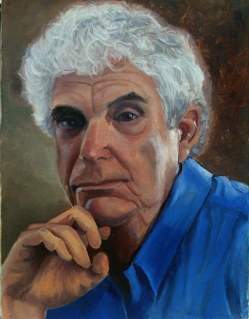ACADEMICS, UNIVERSITY STUDENTS and activists are creating an informal network reaching throughout California and beyond to seek justice for the more than 25,000 immigrants held in federal detention centers across the nation. It is eye-opening work and often distressing.
Members of the network struggle to penetrate the secrecy in which Immigration and Customs Enforcement (ICE) shrouds its immigration centers, many located far from attorneys who might be able to help. When the network pierces the concealment, it often finds babies imprisoned with their mothers, random mistreatment by guards and an ever-growing backlog of cases awaiting hearings in immigration court.
“As a state university, we have an obligation to train students who will give back to the state, and immigrants are terribly important. Immigrants contribute greatly to the state,” Ingrid Eagly, a UCLA law professor who is part of the network, told me in a recent telephone interview.
Victor Narro, project director at the UCLA Labor Center and one of Eagly’s network colleagues, put it this way: “We are activist scholars, bringing the university into the streets.”
Championing justice is crucial now, when immigrants are arriving in California and throughout the United States in ever-growing numbers, and it will become ever more urgent as desperate newcomers — refugees hoping for asylum after President Biden’s end to the war in Afghanistan — attempt to enter the country. This is the immediate future of the battle over immigration, one that will shape the future of Los Angeles and the larger nation. It is far from settled.
A Washington Post-ABC News poll in early September showed, for example, general support for the resettlement of Afghans in the United States, after security screening. But granting them entry is likely to anger Americans bitterly opposed to immigration of any kind.
UCLA and beyond
UCLA is at the center of this informal network of professors, students and activists pursuing justice for immigrants. But it is hardly alone.
Immigration clinics at the USC Gould School of Law and Southwestern Law School send students into the community to represent immigrants in deportation hearings. Centers for undocumented students at California State University, San Bernardino, and other Cal State campuses provide gathering places for students and faculty, as well as on-campus locations from which activists can enter the community and fight for those fearing deportation. There are many such examples around the state.
As faculty director of the UCLA Law School’s criminal justice program, Prof. Eagly is deeply involved. She took her students to rural Texas to work with immigrants arrested by federal officers who accused them of illegal entry into the country. The immigrants were jailed by ICE officers after seeking amnesty at the border, or they were caught during raids on their workplaces.
The students went from familiar surroundings at UCLA to ICE’s South Texas Family Residential Center in Dilley, Texas, 70 miles southwest of San Antonio, where the company that runs the center for the federal government had been accused of treating the immigrants as if they were dangerous criminals. The students met with migrants from Guatemala, Mexico, El Salvador, Ecuador and Honduras.
The center is tantamount to a prison for families as they await hearings in which they try to convince an immigration court that they fled their countries because they had feared death or injury at the hands of criminal gangs or corrupt police. These hearings are called “credible fear” interviews. If the immigrants are not persuasive enough, deportation proceedings begin. Like most detention centers, the South Texas facility is far from the immigration lawyers and translators the immigrants need to guide them through the complex process. Among Guatemalans, for example, 22 languages are spoken.
Visiting the South Texas Center gave Eagly’s students a unique experience, she said. “They had deep concerns. We saw babies in arms being detained. We would hear about inadequate health care and mistreatment by guards.” Even though the observers were only law students, Eagly added, the fact that the inmates had any representation at all made a difference in the process and getting people released.
It was an intense introduction to a system bogged down in bureaucracy and shaped by years of hostility toward immigrants, extending through Democratic and Republican administrations. Democrats, fearing an electoral backlash, promoted laws increasing penalties for immigration violations. President Trump, elected as an anti-immigrant crusader, carried them to new extremes. The students learned that the backlog of cases awaiting hearings in immigration court numbered almost 1.4 million, according to Syracuse University’s Transactional Records Access Clearinghouse (TRAC). Someone seeking a hearing at the Texas center could wait as long as 2.4 years, TRAC said.
When Eagly’s students returned from Texas, they recruited lawyers who would take immigration cases without charge and try to help immigrants through the legal maze.
UCLA SOCIOLOGY PROFESSOR Cecilia Menjivar and her students focused on the inequalities that immigrants found in the United States. For many, it was simply a continuation of the hard life they had left in Central America. “Because it is so difficult to access people in detention, we approached it through lawyers,” Menjivar said. “What we wanted to do was capture the everyday life in detention centers. We wanted to focus on what life is like in detention centers. We also interviewed immigrants who had left detention.”
Menjivar recalled visiting a detention center in Eloy, Arizona, about 65 miles southeast of Phoenix, to attend immigration court. “I had to go through three gates before entering the facility, first a barbed-wire gate, then two [more],” she said. “A guard accompanied me until I got to the courtroom. Six gates or doors [total] to get to the courtroom.
“Immigrants are often moved from one place to another. Lawyers may lose contact with them. Immigrants can’t be found, [are] moved to a different facility, sometimes to a different state. So families have to locate relatives.”
Studying the crisis
Narro, the UCLA Labor Center project director, told me about students venturing into Pico-Union in Los Angeles, where impoverished immigrants from Central America and Mexico crowd into apartments, making it one of America’s densest neighborhoods. Some of the immigrants try to find work in the food industry.
The students enroll in classes such as “Immigrants, Students and Higher Education,” taught by Labor Center Director Kent Wong. From these classes come academic studies like the center’s examination of the impact of robots on food workers. The studies, in turn, help shape legislation on the federal, state and local levels.
“Two summers ago, they did a project on gig workers,” Narro said. “We train students on how to survey workers. They interviewed gig drivers. They collected data and analyzed it, and the information was used by community activists.
“[In that way], the activists become scholars.”
Shannon Speed combines many of the attributes of scholars and activists. Speed is a professor of gender studies and anthropology at UCLA and director of the American Indian Studies Center. She also is a citizen of the Chickasaw Nation of Oklahoma.
The center brings together indigenous American Indian students with faculty, staff, alumni and members of the indigenous community. Its goal is to address American Indian issues and support native communities. It also acts as a bridge between the academy and indigenous peoples locally, nationally and internationally.
One of Speed’s accomplishments has been to lead a successful effort to have Los Angeles adopt Indigenous People’s Day, the largest city to do so. As director of the Community Engagement Center at the University of Texas in Austin, she was one of a corps of volunteers who inspected detention centers.
“We would talk [to immigrants] about how things were, what their needs were, how they came to be there,” she said. “Almost all had been kidnapped for ransom.” Now, Speed said, they had no idea when — or whether — they might be released from detention.
She collected some of their stories in a book, Incarcerated Stories: Indigenous Women Migrants and Violence in the Settler-Capitalist State. The subtitle reflects Speed’s thesis: that European settlers imposed a violent culture on Indians living throughout the length and breadth of South and North America, a violence that continues in the treatment of the indigenous people Speed grew up with and whom she and her students met every day.
“What the stories of indigenous women migrants make evident, above all else,” Speed wrote, “is their strength and resilience as they seek to free themselves of the oppression and violence that mark their lives.”
These are the lessons, learned in migrant communities, that students and their academic and activist mentors will take with them as the United States meets its ongoing challenge of immigration, with its newest confrontation: this one between those who approve of Afghan resettlement and those who do not.
There is work left to do: Even as Americans have voiced their sympathy for Afghans who helped U.S. soldiers fight the 20-year war in Afghanistan, the Post-ABC News poll shows that 27% of Americans oppose resettling Afghans here.
























